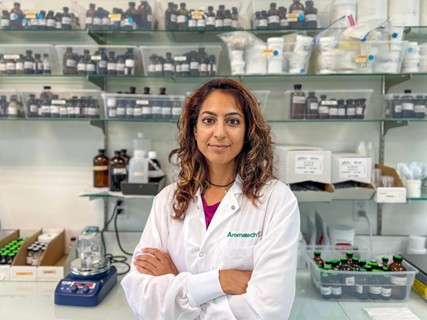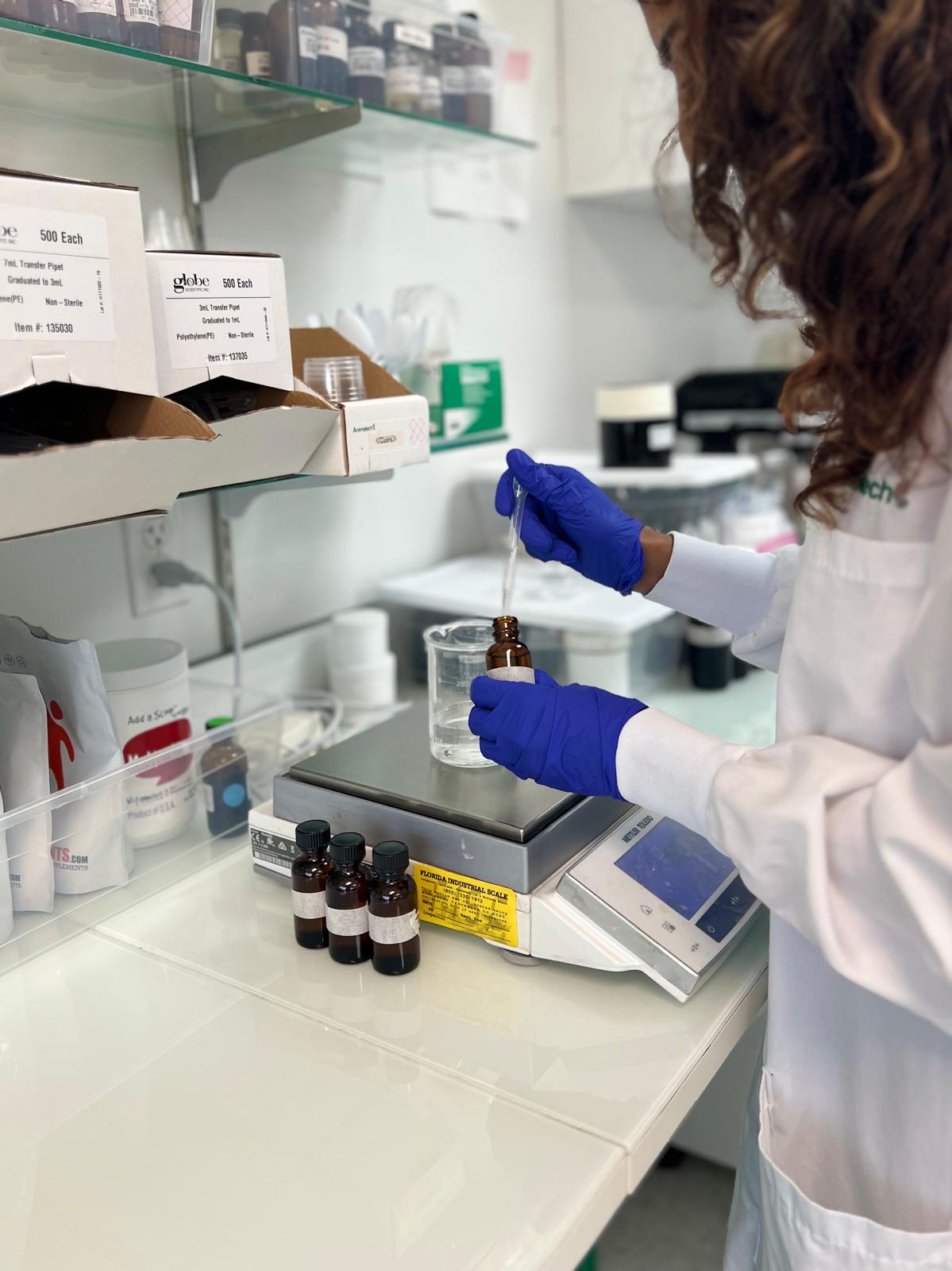
The best flavor is a selling flavor.
During a college food science project, we had to make vegan lobster mac & cheese. It was just a prototype. But the moment the flavor hit, the umami, the brine, the traditional tastes, I was hooked.
That was my “this is it” moment.
Meet Anishka, the creative force behind some of our most exciting flavor breakthroughs.
We talked with her about what drives her, how she approaches new flavor creation, and what sets Aromatech apart in today’s fast-changing flavor landscape.

My journey into the flavor industry was somewhat serendipitous, much like many of my colleagues. My first introduction to the field came during a food science and technology class in college, where I was captivated by the idea of using an entirely vegan lobster flavor in a frozen macaroni and cheese prototype my group was working on. Growing up with both my mother and grandfather as vegetarians, this sparked a real fascination with how flavors could be crafted to mimic traditional tastes. It was a ‘lightbulb moment’ for me, and I began to realize the vast potential of flavor science.
After graduating with a bachelor’s in culinary nutrition, I was eager to find an internship in food product development. While searching, I came across an outdated PDF listing internship opportunities at a flavor house. Though the document was clearly old, I couldn’t shake the feeling that I should reach out to see if the opportunity was still available. That instinct led me to my first real experience in the industry, and from there, my career in flavor development began.
I don’t think I’ve ever nailed a flavor formulation perfectly on the first try, there’s always room for refinement. Whether it’s adjusting solubility, tweaking the impact, or changing the order of addition, there are always details to consider. A lot of times, I find myself balancing the finishing impact with the aromatic intensity of the flavor. Ideally, you want a flavor that not only has a pleasant taste but also lingers on the palate. The aromatic intensity is just as crucial since it’s the initial impression customers get when experiencing the flavor.
It’s essential to create a flavor that not only meets the specifications of the brief but also delivers a viable, enjoyable experience. One piece of advice from a mentor that always sticks with me is, ‘The best flavor is a selling flavor.’ In other words, we need to step away from our own biases and truly listen to and understand our customers’ needs and preferences.
Balancing creativity with technical and regulatory constraints is one of the most intriguing challenges in flavor development. As a flavorist, I believe it’s essential to strike a harmonious balance between these two forces. On the one hand, the creative aspect is driven by consumer trends and desires, whether it’s the demand for unique flavor combinations like sweet-heat (or ‘swicy’) or the pursuit of innovative new taste experiences. On the other hand, regulatory demands such as organic certification or clean-label requirements play a crucial role in shaping what is technically possible and permissible.
Consumers, ultimately, are the driving force behind both these trends. While creative innovation pushes us to explore new flavor profiles and boundaries, we must also be mindful of how regulations and guidelines shape those innovations. I’ve learned to approach this challenge with flexibility and a solutions-oriented mindset. For example, if we’re developing a bold new flavor that needs to be certified organic, it may require some rethinking of ingredients or sourcing. But rather than seeing regulatory constraints as limitations, I view them as opportunities to problem-solve and create flavors that not only excite the palate but also align with evolving industry standards.
In the end, it’s about staying open to new ideas, respecting regulatory frameworks, and finding ways to merge both aspects so that the final product is not only innovative but also compliant and viable in today’s market.

Oh, you want me to give away my signature ingredient? Just kidding, sort of! Thanks to my background in savory flavors, I’ve had the opportunity to experiment with some less conventional ingredients, including using savory-leaning aroma chemicals in sweet formulations, and vice versa. One of the most surprising things I’ve learned is that nearly any material can be used in an unexpected way, as long as it’s thoughtfully integrated and has a clear purpose.
The key is justification and support. When incorporating an unusual ingredient, I always ask myself: is it functioning as a top, middle, or base note? Is it meant to enhance, balance, or even obscure another element? Once I define its role, I build a structure of supporting materials around it. That ‘infrastructure’ is what allows the unexpected to feel intentional and harmonious in the final flavor. Ultimately, it’s not all about shock value, it’s about using creativity and technical understanding to make something surprising, yet seamless.
Aromatech stands out as a strong competitor in the flavor industry due to several key factors.
First and foremost, our deep, collaborative relationships with customers are a huge differentiator. We don’t just provide flavors; we also work alongside R&D teams to troubleshoot and offer tailored solutions that meet their unique needs. This partnership approach allows us to be more than just a supplier, we’re an extension of their innovation process.
Another standout feature is the level of innovation we bring to customer presentations. We’re always ready with cutting-edge concepts that push the envelope and offer fresh possibilities. But I believe our greatest strength lies in the exceptional quality of our source materials. Our rigorous, multi-departmental process for sourcing new materials is what ensures we only work with the best. It’s a fully integrated effort that includes Quality Control, Quality Assurance, Procurement, and, of course, Research and Innovation. This collaborative approach ensures that every ingredient we bring in meets our high standards and aligns with our commitment to excellence in flavor creation.
My advice to anyone aspiring to become a flavorist today would be to stay endlessly curious and dedicated to learning. The flavor industry is always evolving, so it’s crucial to be both tenacious and adaptable. Immerse yourself in the nuances of flavors and their applications. One of the best ways to do this is by expanding your knowledge of regional foods and culinary traditions. Every cuisine has its own unique flavor profiles and techniques, and understanding these can greatly enhance your creative toolkit.
In addition, I’d recommend paying close attention to the textures and flavors in your everyday meals. Taste is multi-dimensional, and as a flavorist, you’ll need to train your palate to recognize and dissect different elements, whether it’s a subtle note in a spice blend or the mouthfeel of a particular ingredient. It’s all about constantly engaging with the world of flavors, and letting your curiosity lead the way.
Anishka’s journey is a reminder that flavor is much more than science or art, it is the bridge filling the gap between innovation and experience.
At Aromatech, that balance is what makes the best flavor a selling flavor.